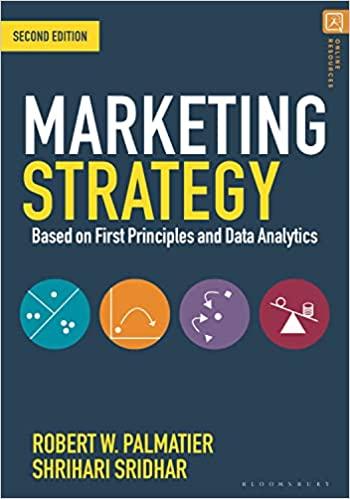The following case is a story of MHG, a leading manufacturer of drills for energy companies in
Question:
The following case is a story of MHG, a leading manufacturer of drills for energy companies in the United States. MHG started to anticipate that its competitors will start targeting its younger customers with new technologies. In response, MHG launched a mobile app that allowed customers to search through drilling tools more intuitively than in print catalogs. However, in order to find out whether such an app will pay of in the future, MHG undertook analysis to quantify the economic benefit of launching such an app and maintaining its sustainable competitive advantage (SCA) through brands, offerings, and relationships (BORs) strategies.
MHG is a large manufacturer of drills for energy companies. From a customer perspective, given the complexity of the drilling, identifying the right drilling tools while minimizing process cost is not a simple task. A typical customer needs to review 18 different options even for a narrow drilling operation and arriving at the right drill has been a problem. Typically, MHG provided printed drill catalogs that offered great detail, but these were time-consuming for customers who lacked the know-how. With a generational turnover and a general lack of interest in manufacturing jobs among younger workers, print catalogs were falling out of favor.
To help its end-customers in the energy industry, MHG launched a free user-friendly mobile app named DRILLPRO. DRILLPRO is a drill selector to help customers search for optimal drills through an app that uses machine-learning algorithms. It was developed for a younger workforce who are savvy with internet-enabled technologies in the energy sector. DRILLPRO also brought down the time needed to find the right drill by 84%, according to internal estimates.
Competitors always react and failing to understand and address these competitive retaliations will lead to poor business performance. Thus, firms must address competitive attacks by building and maintaining sustainable competitive advantage (SCA). As we documented in Chapter 4, market-based sources of SCAs can be grouped into three main categories: brands, offerings, and relationships (BORs). DRILLPRO launched in 2017, positioned as a free mobile app for customers, and did not generate any direct revenue for MHG. Consequently, MHG did not have a direct method to estimate the economic impact of the app, making it unclear if DRILLPRO paid of. MHG sought a scientific approach to target potential customers, to induce further adoption of DRILLPRO, and to stay competitive. Specifically, it asked:
● Did the adoption of DRILLPRO by customers generate incremental revenue for MHG?
● What types of customers generated more revenue for MHG after adopting DRILLPRO?
QUESTIONS
1. Comparing the change in sales for the treatment frms and control frms, was there incremental revenue generated for MHG due to DRILLPRO? If so, what was the incremental % change in revenue?
2. If MHG’s total revenue across customers was $200 million, and if the app costs $3 million to develop and $10 million to maintain (with office staff, cloud services, etc.), did the app generate positive return on investment for MHG?
3. Which types of customers (i.e., regions) generated more value for MHG through DRILLPRO?
Step by Step Answer:






